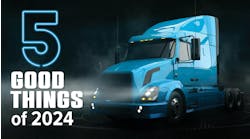I have a love/hate relationship with the Internet. I love it because the Internet gives me almost instant access to speeches, press releases, facts and figures that used to take days to track down by phone and fax.
Yet I also hate the Internet. I hate it because most of web sites I have to navigate are poorly laid out, making it hard to find even basic information, such as a company's address and telephone number. Also, since many sites are packed with the latest “gee whiz” graphics, it can take forever to load them and finally get to what you're looking for.
Chuck Kapelke, who writes a monthly column called “Net Work” for Continental Airlines' in-flight magazine, crystallized my feelings towards the Internet. He, in turn, interviewed Jakob Nielsen, a consultant who wrote “Designing Web Usability: The Practice of Simplicity,” which I flipped through at an airport bookstore. Both Kapelke and Nielsen emphasize one point over and over to those in charge of designing and maintaining web sites: Keep it simple.
For truck fleets, easy-to-use web pages are a must. You've got customers out there that are looking for information. If you're a dump truck operation, they want to know how much you can haul. If you're a landscaper, they want to know if tree trimming is one of the services you offer. Without easy access to such information, most Internet users simply move on to the next company.
Here are some suggestions from Kapelke and Nielsen, as well as yours truly, to make your site user-friendly.
Search engines. Nielsen's research found that most Internet users already know what they're looking for when they visit a web page. That's why it's important to have a search engine right there on the first page, front and center, so they can get where they want to go with a minimum of effort. Nielsen said the best spot is in the top left-hand section of the page, right next to your logo.
Contact info. Nielsen found that many web surfers use the Internet like a phone book to find addresses and phone numbers, as well as specific contacts. I can personally attest to this. I went to Ruan Transportation's web page looking for the corporate address and phone number — and couldn't find it anywhere. Nielsen suggests that a company have its corporate address and phone number on every page, plus one easy-to-find section where specific contacts and their phone numbers are listed.
Do away with pizazz. Nielsen's research found that almost all web users could care less about snazzy film clips, graphics and cartoons. Such items slow down their ability to get to the information they want. I can also tell you that with slower Internet connections, ‘flash’ introductions and other such gizmos can cause considerable delays in loading a page.
No maze, no fuss. It's amazing, but you can actually get lost in a web site. I've done it and Nielsen says it's a common problem with corporate sites. Often there are so many links to specific sites that you can't find your way back to the home page. Nielsen suggests that you keep a listing of ‘home’ sites visible at all times, so web users can toggle back and forth easily between the main page and whatever subdivision they happen to be in.
One last thing. Be very careful with old web addresses. The Heritage Foundation, a Washington, D.C.-based think tank, found that out the hard way. When the URL license expired on a web site Heritage set up to celebrate its 25th anniversary, an Internet pornography firm bought it. Scavenging for heavily trafficked sites with URLs that have expired in order to divert visitors to your site is apparently a widespread practice. Make sure it doesn't happen to you.


